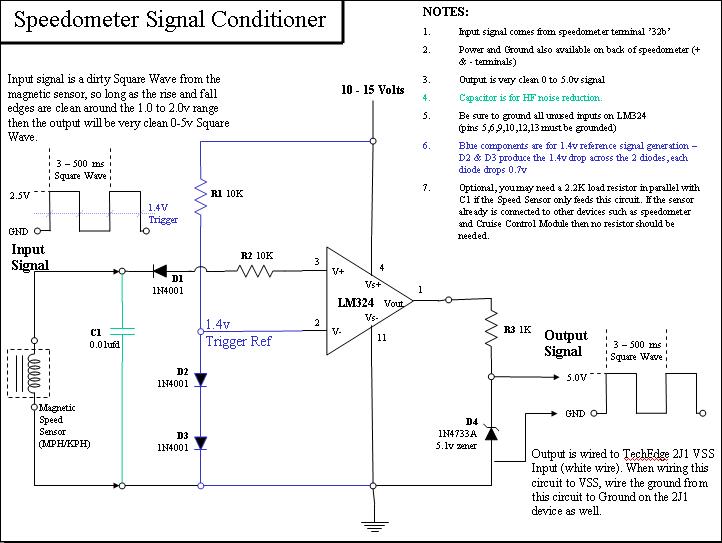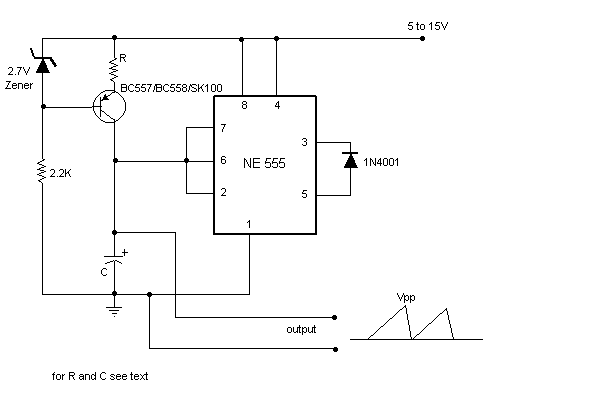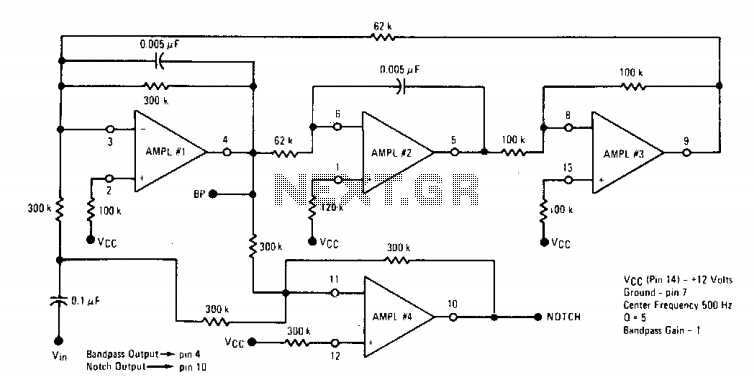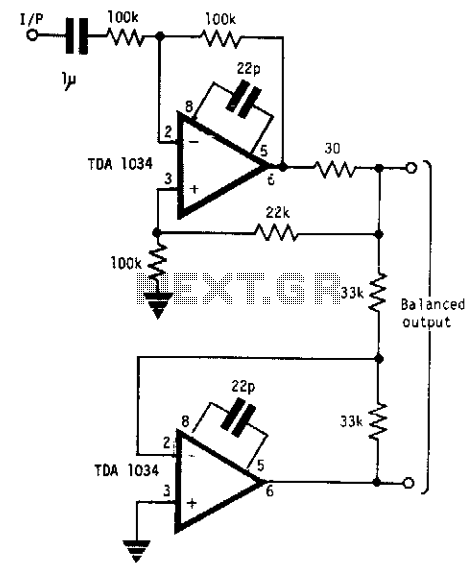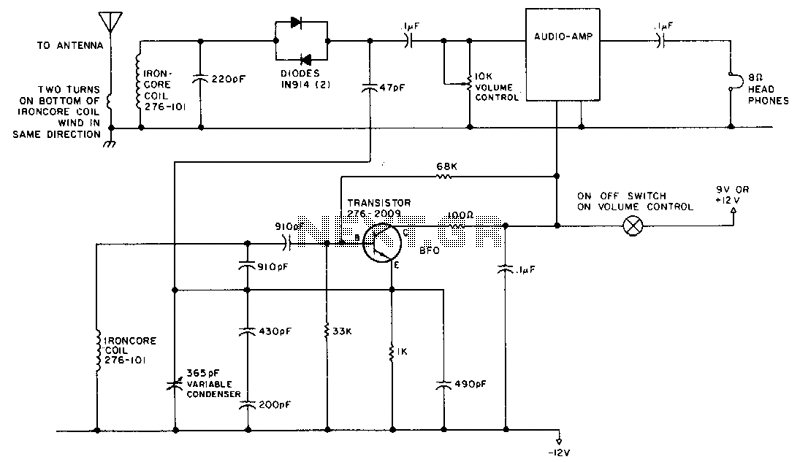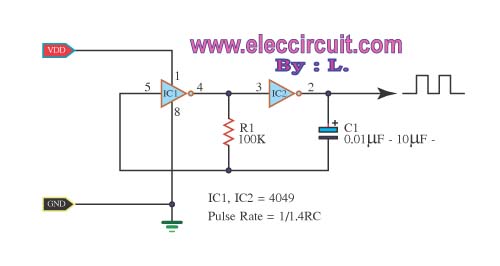
4KHz-170MHz Wide Band RF Signal Generator I

Most commercial-grade signal generators provide more than just sinusoidal waveform output, but they tend to be expensive for casual use. This article presents a simple wideband signal generator built around Linear Technology's LTC6905 Silicon Oscillator, capable of generating frequencies from approximately 17 MHz to 170 MHz. Additionally, a FairChild Semiconductor 74VHC4040 12-stage high-speed binary counter enables this signal generator to produce precise frequencies from as low as 4 kHz to the upper frequency limits of the LTC6905. The output waveform can be either a square wave (from the 74VHC4040) or a sinusoidal wave (from the LTC6905), making it suitable for reference signal applications. The frequency of the LTC6905 output is determined by the divider setting (pin 4) and the voltage applied to pin 3. To ensure a more stable and accurate output, an Analog Devices AD5235 1024-position digital potentiometer is utilized for frequency adjustment. A digital potentiometer with at least 8-bit resolution is recommended, and the AD5235 offers a 10-bit resolution for finer frequency steps. To automate the frequency range selection of the LTC6905, a reed relay switch and a Texas Instruments TS5A23159 low on-resistance analog switch are employed to control transitions among the three divider settings of the LTC6905, allowing for continuous access to the full range of available frequencies. Frequency transitions are managed by a switch (SW1) in conjunction with an ATmega328p microcontroller. To generate frequency ranges below the LTC6905's lower limit of 17 MHz, the 74VHC4040 binary counter acts as a frequency divider, enabling frequencies to be calculated using the formula [f_n = f_0/n] (where n = 1 to 12). It is important to note that the LTC6905 output is sinusoidal, while the frequency divider output is a square wave; this distinction typically does not pose an issue for reference signal applications. In scenarios with strict waveform requirements, a high-speed Schmitt trigger may be added to the LTC6905 output. The overall layout of the signal generator is enclosed in an aluminum case to mitigate potential RF interference, enhancing circuit stability.
The circuit design integrates several key components to achieve its functionality. The LTC6905 serves as the primary frequency generator, leveraging its ability to produce a wide frequency range. The output is influenced by the divider settings, which are adjusted via the digital potentiometer. This potentiometer allows for precise tuning of the output frequency, which is crucial for applications requiring accuracy.
The 74VHC4040 binary counter operates as a frequency divider, enabling the generation of lower frequencies from the LTC6905's output. By dividing the frequency output by integers from 1 to 12, a range of frequencies can be produced, making the circuit versatile for various applications. The use of a reed relay and an analog switch facilitates seamless transitions between divider settings, allowing for automated frequency selection without manual intervention.
The ATmega328p microcontroller plays a crucial role in controlling the overall operation, including managing the frequency selection process through the switch interface. This integration of digital control enhances the functionality of the signal generator, making it adaptable to different operational needs.
In high-frequency applications, the enclosure of the circuit in an aluminum case is a practical design choice. This approach minimizes electromagnetic interference, ensuring that the signal integrity remains intact during operation. The addition of a high-speed Schmitt trigger can further refine the output waveform, particularly in applications where waveform shape is critical.
Overall, this signal generator design combines various electronic components to create a cost-effective solution for generating a wide range of frequencies, suitable for both casual and more demanding applications.While most commercial grade signal generators offer more than just outputting a sinusoidal waveform, they are quite pricey for casual use. In this article, I will show you a simple wide band signal generator that is built around a Linear Technology`s LTC6905 Silicon Oscillator, which is can generate frequencies from roughly 17MHz to 170MHz.
Along with a FairChild Semiconductor`s 74VHC4040 12-stage high speed binary counter, this signal generator is capable of generating precise frequencies from as low as 4KHz all the way through the ranges of LTC6905. The output waveform is either square wave (via the output from 74VHC4040) or sinusoidal wave (via LTC6905 ²s output), but should be sufficient for using as reference signals.
The frequency of the LTC6905 output is determined by the divider (pin 4) setting along with the voltage applied on pin 3. To generate more stable and accurate output, I used an Analog Devices` AD5235 1024 position digital potentiometer for the frequency adjustment.
In general, digital potentiometer of at least 8 bits resolution is desired (AD5235 has a 10bit resolution) since we can get closer output frequency steps. To further automate the frequency range selection of LTC6905 (the frequency ranges are selected via the settings of the divider pin), I used a reed relay switch along with a Texas Instrument`s TS5A23159 low on-resistance analog switch to control the transitions among the three divider settings LTC6905 has to obtain a full range of the available frequencies continuously.
The frequency transition is controlled by a switch (SW1) along with an ATmega328p MCU. In order to provide frequency ranges below LTC6905 ²s lower range (17MHz), I used a 74VHC4040 high speed 12-stage binary counter as a frequency divider so frequencies of [f_n = frac{f_0}{n}] can be obtained (n = 1 to 12). One thing to keep in mind is that the output from LTC6905 is sinusoidal while the output from the frequency divider is square wave.
This in general should not be of any issue when the output is used as a reference signal. In applications where the waveform requirement is strict, a high speed Schmitt Trigger may be added to LTC6905 ²s output. The picture below shows the layout of the signal generator. Because of the high frequencies it is operating under, I chose to enclose the whole circuit inside an aluminum case to reduce possible RF interference and thus makes the circuit more stable.
🔗 External reference
The circuit design integrates several key components to achieve its functionality. The LTC6905 serves as the primary frequency generator, leveraging its ability to produce a wide frequency range. The output is influenced by the divider settings, which are adjusted via the digital potentiometer. This potentiometer allows for precise tuning of the output frequency, which is crucial for applications requiring accuracy.
The 74VHC4040 binary counter operates as a frequency divider, enabling the generation of lower frequencies from the LTC6905's output. By dividing the frequency output by integers from 1 to 12, a range of frequencies can be produced, making the circuit versatile for various applications. The use of a reed relay and an analog switch facilitates seamless transitions between divider settings, allowing for automated frequency selection without manual intervention.
The ATmega328p microcontroller plays a crucial role in controlling the overall operation, including managing the frequency selection process through the switch interface. This integration of digital control enhances the functionality of the signal generator, making it adaptable to different operational needs.
In high-frequency applications, the enclosure of the circuit in an aluminum case is a practical design choice. This approach minimizes electromagnetic interference, ensuring that the signal integrity remains intact during operation. The addition of a high-speed Schmitt trigger can further refine the output waveform, particularly in applications where waveform shape is critical.
Overall, this signal generator design combines various electronic components to create a cost-effective solution for generating a wide range of frequencies, suitable for both casual and more demanding applications.While most commercial grade signal generators offer more than just outputting a sinusoidal waveform, they are quite pricey for casual use. In this article, I will show you a simple wide band signal generator that is built around a Linear Technology`s LTC6905 Silicon Oscillator, which is can generate frequencies from roughly 17MHz to 170MHz.
Along with a FairChild Semiconductor`s 74VHC4040 12-stage high speed binary counter, this signal generator is capable of generating precise frequencies from as low as 4KHz all the way through the ranges of LTC6905. The output waveform is either square wave (via the output from 74VHC4040) or sinusoidal wave (via LTC6905 ²s output), but should be sufficient for using as reference signals.
The frequency of the LTC6905 output is determined by the divider (pin 4) setting along with the voltage applied on pin 3. To generate more stable and accurate output, I used an Analog Devices` AD5235 1024 position digital potentiometer for the frequency adjustment.
In general, digital potentiometer of at least 8 bits resolution is desired (AD5235 has a 10bit resolution) since we can get closer output frequency steps. To further automate the frequency range selection of LTC6905 (the frequency ranges are selected via the settings of the divider pin), I used a reed relay switch along with a Texas Instrument`s TS5A23159 low on-resistance analog switch to control the transitions among the three divider settings LTC6905 has to obtain a full range of the available frequencies continuously.
The frequency transition is controlled by a switch (SW1) along with an ATmega328p MCU. In order to provide frequency ranges below LTC6905 ²s lower range (17MHz), I used a 74VHC4040 high speed 12-stage binary counter as a frequency divider so frequencies of [f_n = frac{f_0}{n}] can be obtained (n = 1 to 12). One thing to keep in mind is that the output from LTC6905 is sinusoidal while the output from the frequency divider is square wave.
This in general should not be of any issue when the output is used as a reference signal. In applications where the waveform requirement is strict, a high speed Schmitt Trigger may be added to LTC6905 ²s output. The picture below shows the layout of the signal generator. Because of the high frequencies it is operating under, I chose to enclose the whole circuit inside an aluminum case to reduce possible RF interference and thus makes the circuit more stable.
🔗 External reference
